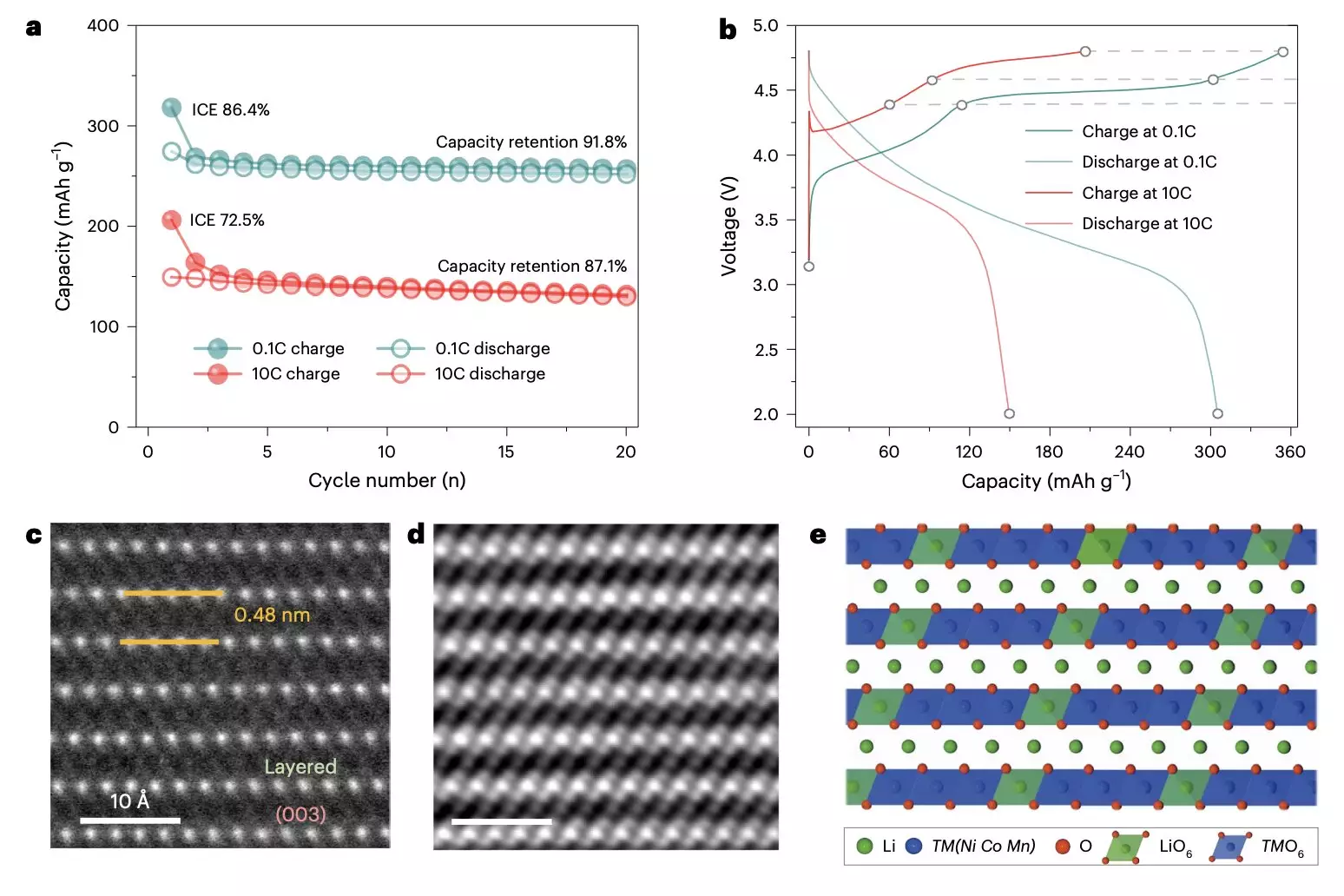In the landscape of energy storage technologies, the quest for the perfect battery has taken center stage, driven by the growing demands of electric vehicles, portable electronics, and renewable energy systems. Researchers have been relentless in their pursuit to develop battery technologies that not only enhance energy capacity but also exhibit rapid recharge capabilities, prolonged life cycles, and diminished discharge rates. As technological advancements unfold, the spotlight has increasingly turned to the role of cathode materials in achieving these goals. Among the contenders in this field are layered lithium-rich transition metal oxides, which have emerged as candidates for high-performance cathodes.
Layered lithium-rich transition metal oxides represent a paradigm shift in the potential of rechargeable batteries. Their unique layered structure enables lithium ions to migrate effortlessly between layers during charging and discharging processes. This structural dynamic is coupled with a rich lithium composition, which greatly enhances the capacity to store and release energy. The incorporation of transition metals—such as manganese, cobalt, and nickel—in conjunction with oxygen anions creates a conducive environment for redox reactions, necessary for the battery operation.
These benefits make layered lithium-rich metal oxides an attractive choice for applications ranging from electric vehicles to consumer electronics. The potential for increased energy density could significantly alter the landscape of how batteries are utilized, promising quicker and more efficient power solutions. However, this technological promise has not been realized without challenges.
Despite the alluring advantages posed by these cathode materials, researchers have encountered persistent issues with rapid degradation and voltage loss over time. These challenges stem from factors such as structural instability and chemical reactions within the materials during operational cycles. The driving force behind this degradation has been a focal point of rigorous research, with scientists aiming to understand how these layered cathodes fail.
Recent investigations undertaken by researchers from Sichuan University, Southern University of Science and Technology, and others have highlighted the crucial pathways leading to this deterioration. By examining the interactions at both nanoscale and microscale levels, these experts have sought to unravel the complexities contributing to the short lifespans of batteries utilizing these promising cathodes.
Examining Degradation Mechanisms
In their compelling study published in *Nature Nanotechnology*, researchers employed advanced imaging techniques like energy-resolved transmission X-ray microscopy (TXM). This approach provided them with insights into the structural and chemical composition of the cathodes, revealing various oxygen vacancies and distortions arising at different charging rates.
Their findings underscored that the accumulation of oxygen defects during the initial charge cycle can lead to detrimental changes in the material structure, including phase transformations and the creation of nanovoids. These alterations, compounded by ultrafast lithium intercalation and unavoidable structural modifications, manifest as low initial Coulombic efficiency and further induce cracking and expansion throughout subsequent charge cycles.
The revelations from the recent study could pave the way for innovative strategies aimed at mitigating the degradation issues associated with layered lithium-rich cathodes. By understanding the fundamental structural and chemical factors that lead to battery decay, researchers can develop design modifications and novel material combinations that enhance stability and longevity.
The promise of layered lithium-rich oxides in battery technology remains bright. If researchers can address the identified degradation pathways effectively, these materials might one day play a pivotal role in crafting batteries that truly meet the high demands of modern energy storage solutions.
In sum, while layered lithium-rich transition metal oxides represent a significant advancement in battery technology, their pathway to practical application is hindered by their susceptibility to degradation. The insights gained from recent research efforts are critical in understanding these failures and will contribute to the ongoing development of next-generation batteries. As we forge ahead into an increasingly electrified future, the knowledge culled from these studies may help to usher in a new era of more durable, efficient, and powerful energy storage systems. The future holds promise, but it also demands continued innovation and adaptability in the realm of battery technology.


Leave a Reply